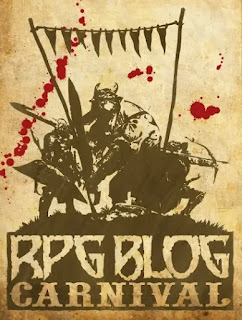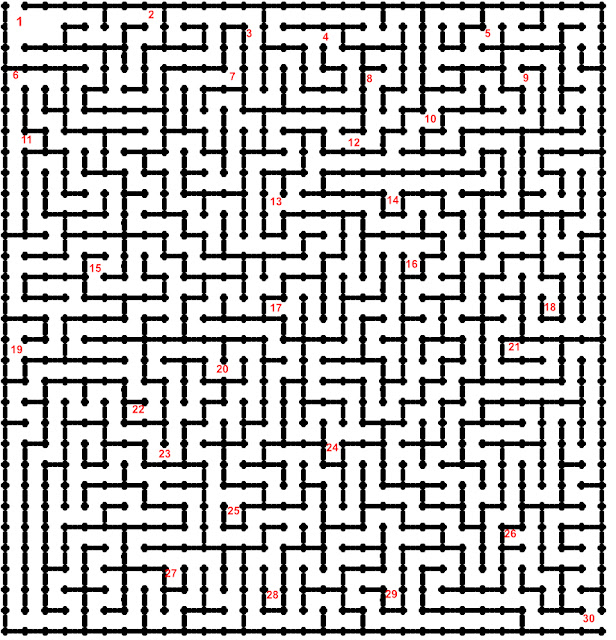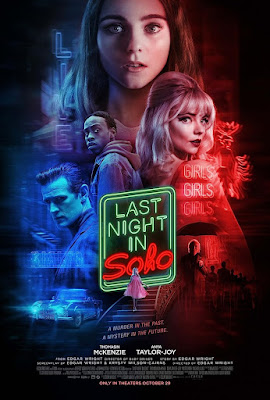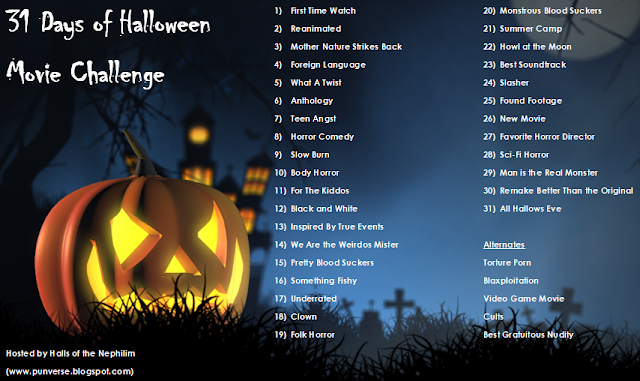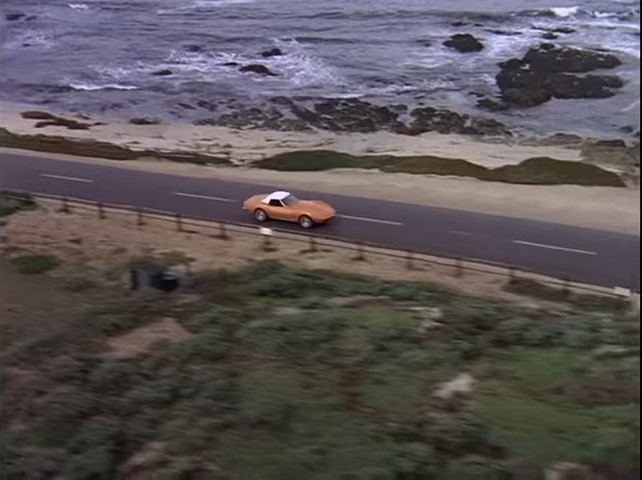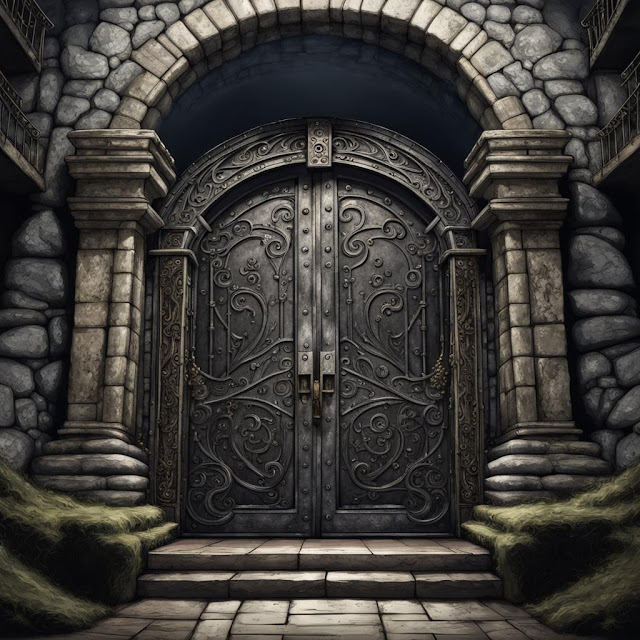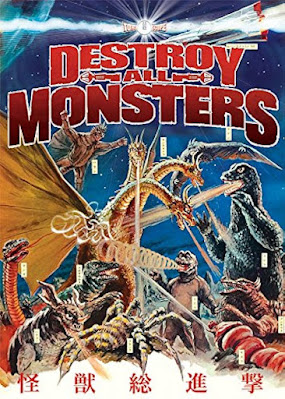
The City is one of contrasts and contradictions. Of gleaming skyscrapers from where the Trusts control every aspect of commerce and politics and governance, whilst the majority of the populace reside in crumbling, concrete tower blocks or alleyway-ridden rookeries. Of buildings without end and no city limits, yet few rarely travel beyond the confines of their community. Of the advanced technology that only the rich and powerful have access to versus the rickety, often make do devices that the masses have—the rusting machinery they have to work with in the factories, mills, workshops, and mines, the guttering, reeking fish oil lamps and flickering electrics with which they light their homes, and the dim televisions and squawking talkboxes they have for entertainment. Of the cleanliness of the rich and the churches versus the squalor of the slums and the streets. Of the humanity to be found there versus the inhumanity of the petty bylaws enforced by the authorities and the nightmares that stalk the streets—killers such as the Ticktock Man and the Iron Lady and the Shifted, strange entities barely whispered of in the darkest of corners of pubs and speakeasies. The City is divided by massive series of concentric canals, crossed mainly by skiffs due to the lack bridges, the iron for them going into the railway which clanks and groans its way around The City, policed heavily and often heavy-handedly by the Transit Militia. The City is a Dickensian nightmare filtered through the films
Brazil,
Delicatessen, and
Dark City, where life is mean and paltry, but there are those that will stand up to the narrow-mindedness of the authorities, of the avariciousness of the Trusts, the viciousness of the gangs, and worse. They do this not for themselves, but for their corner and their community, even if it means causing trouble. This is the setting for
A|State.
A|State was originally published by Contested Ground Studios in 2004 as a traditional roleplaying game that presented a fascinating setting, but unfortunately no real idea what it was about or what the players and their characters were supposed to do.
A|State, Second Edition returns to the setting of The City and provides a reason to explore its dystopian dimensions as well as shifting to a more modern set of roleplaying mechanics that emphasise both player agency and its consequences.
A|State, Second Edition is published by
Handiwork Games and it uses the
Forged in the Dark rules, first seen in
Blades in the Dark, published by Evil Hat Productions in 2017. In
A|State, Second Edition, the Player Characters are Troublemakers, who have banded together to form an Alliance, which seeks to protect and improve the Corner and its surrounding community that they call home. In the process, they will travel across The City, further than any other members of their community, discover secrets, and more importantly, in returning to the Corner, bring usually unwanted attention upon themselves and their community, and accrue trouble. The Corner itself is not predefined, but created collectively during the roleplaying game’s set-up process and through play, the players and their Troublemakers can expand and upgrade its features in ways which grant them further benefits whilst also having to protect the newly added Claims.
A Troublemaker in
A|State has three Attributes and twelve Actions. The three Attributes are Insight, Prowess, and Resolve. These represent a Troublemaker’s ability to resist bad consequences. Each Attribute has four Action Ratings associated with it. Examine, Find, Scrounge, and Tinker for Insight; Fight, Sneak, Touch, and Wreck for Prowess; and Care, Command, Charm, and Persuade for Resolve. Action Ratings vary in value between zero and four. The value for Attributes are equal to the number of associated Action Ratings which have points in them and not the number points in the Action Ratings. A Troublemaker has an Origin, an Upbringing, and Faith; one or more special abilities; an Escape, such as Faith or Gambling, as means of relieving stress, but which can also become a Vice; and potentially one or more Trusted Allies. This is with another member of the Alliance, another Troublemaker, and must be agreed between the two Troublemakers and their players.
Troublemaker creation begins by selecting a Playbook.
A|State gives seven Playbooks. These are the Stalwart, who uses politics to improve the Corner; the Dinginsmith, who uses small computing devices called dingins and other advanced technology not readily accessible to the general populace of The City; the Ghostfighter, a warrior renowned for his stealth and skill with the preternaturally sharp ceramic knives they wield and the scars from wounds closed by adhesive; the Lostfinder, revered for his ability to find things; the Mapmaker, turned to whenever an intermediary or dealmaker is required; the Sneakthief, who avoids confrontation and steals from the wealthy and the cruel; and the Stringer, citizen-journalist who feeds the constantly turning over media machine of The City. Each Playbook provides base values into two Action Ratings and a player assigns another four points. Each Playbook suggests where to assign them, but the player is free to decide. The player also selects a Special Ability, notes his Troublemaker’s special equipment, and rolls for Backing Faction, a faction in The city which supports the Troublemaker. The player though does not have to choose the standard version of each Playback, for all seven provide three alternatives and what to choose to create them. Thus, the alternatives to the Dinginsmith are the Wiretapper, who accesses The City’s communications for information; the Fulgurator, a member of the Fulgurator’s Guild and works with The City’s railway network; and the Scientist, who examines the nature of The City. Once a player has chosen his Troublemaker’s playback, he also adds Troublemaker’s Origin, Upbringing, Faith, and Escape.
Hope Botchlethorpe – Lostfinder
INSIGHT 2Examine 0 Find 2 Scrounge 2 Tinker 0
PROWESS 0Fight 0 Sneak 0 Touch 0 Wreck 0
RESOLVE 3Care 1 Command 0 Charm 1 Persuade 1
Special AbilityAntiquarian
Special ItemInvestigation Kit
Origin: Lower middle class, medium-sized businessUpbringing: ApprenticedFaith: Third Church of God the ArchitectEscape: GamblingBacking Faction: Professor Pohler’s Historical Institute
Once the players have their Troublemakers and their Alliance, they work together to create the Corner their Troublemakers are protecting. This is done by choosing a spot on the map of The City and then the Crossroads, the central meeting point for the Alliance, such as the unstable waiting room of an abandoned railway station or the dusty attic of a tax records storage depot. This is placed on one of the really quite lovely local maps which will become unique to the Troublemakers’ Alliance as the game progresses. The players select a Reputation, such as Ambitious or Rough, assigns points to its own associated Action Ratings, sets its Morale and Resources values, and adds two Qualities like Bombed Out or Towering. Factions, which can be a Trust, Government, Enforcement, Media, or Criminal, and range in Tier 0 or known on the block to Tier VI or guides the whole city, and take an interest in the Corner to provide potential allies and enemies. This includes the initial Claims that the Troublemakers will want to add to their Corner. Each faction will have its Faction Record which tracks it actions and influence on the Corner as well as NPCs that the Troublemakers can have relationships with. In general, Troublemaker creation is easier than Corner creation, but together their set-up process will take a session for their own.
Mechanically,
A|State is quite simple. To have a Troublemaker undertake an action, his player decides on the action’s goal and the Game Master sets its associated risk and reward. The player will roll a number of six-sided dice equal to an Action Rating. Extra dice can be added and rolled if a fellow Troublemaker helps in the action, for suffering either grief or pushing the Troublemaker, and from Special Items and Special Abilities. Pushing the Troublemaker will cause him to suffer stress, whilst grief is narrative consequence, such as collateral damage, losing an item, pushing a Trouble Clock onwards, and so on. Once the dice have been rolled, the player selects the highest value rolled. If this is a six, the action is successful; if four or five, it is successful, but either imperfect or with an added complication; and on a one to three, it fails. Essentially, the equivalent of ‘Yes’, ‘Yes, but…’, and ‘No’. Further, the players collaborate with the Game Master to determine what happens and before the roll is made have the opportunity to manipulate any reward or risk, whether due to a Special Ability, pushing the Troublemaker, or pushing the reward at a cost of a bigger risk. This has its own Risk/Reward Grid for use in play.
Primary Rewards take the form of ticks on the Progress Clock towards the Alliance’s objectives, increasing the quality of an item or tool, or altering the scale of the action. Risks typically add ticks to the Threat Clock, but other Consequences can add complications to a situation, lose opportunities, and even harm the Troublemaker. The latter is how combat works in
A|State and when a Troublemaker does suffer harm, he can either block it via any armour worn (after which the armour must be repaired) or he can resist using the associated Attribute. This inflicts Stress and if the Troublemaker takes too much Stress, he can suffer a Stress Condition such as Obsessed, Reckless, or Vicious. The Stress will need to be relieved either via the Troublemaker’s Escape or his letting his guard down, but this can leave him open to further trouble. It should be noted that the use of firearms in any situation always increases the nature of the risk associated with an action.
What is not made immediately clear is that mechanically,
A|State is a player-facing roleplaying game. This means that throughout, the Game Master does not roll any dice. Thus, the player will not just be rolling to see if his Troublemaker succeeds or fails, but in some cases, whether an NPC succeeds or fails.
A|State is played in three phases—downtime play, the mission phase, and mission fallout. Missions are intentionally broad, such as Broker, Confront, Deliver, or Evade, and the players will work together to determine the nature of the mission and what it requires, but only to an extent. The aim here is to get to the point where the mission becomes risky and what Troublemakers now do matters. The downtime play is a period when the Alliance can recover from a previous mission, make some coin, engage in a community project, build trust, and so on. It also allows time for personal projects or private jobs. A Troublemaker can also pursue Hidden Agendas which can come into play through the factions whose backing they enjoy, but can suffer consequences if they do not purse an assigned Hidden Agenda.
There is really very good advice for the players and the Game Master, but the advice for the players does feel slightly hidden in the rulebook. For the Game Master, the advice on running
A|State is extensive, beginning with a look at using the clock to track progress in a number of different aspects of The City and the campaign. These include Goal Clocks, Threat Clocks, and more. In the long term, the Danger Clock will track new problems and difficulties that the Troublemakers will face as it generates new Troubles for them. These feed into their own Trouble Engine, which tracks how a Trouble, which might be a change in the mood at the Corner or the disappearance of a contact or friend, changes and escalates, and how the factions might react in the meantime, if the Troublemakers do nothing.
The last third of
A|State is devoted to describing The City itself. It never eases up on its extremes and its brutality, such as the Deathdealers patrolling after cold snaps for the dead who have died from hypothermia or been killed because they want or have access to the cold or the mikefighters which flit and dogfight in the skies above the city, piloted by children because of their size. Short sections break down aspects of The City such as weather, travel, law and order, technology and industry, and more, all with advice on how to use each of the sections. There is a wealth of detail here for the Game Master to bring colour and flavour into her portrayal of The City and that is before a series of two-page spreads detail the numerous neighbourhoods to found across The City. These include notable powers in each neighbourhood, what everyone knows, transport links, locations, what might be known on a Corner there, and ‘Faces in the Crowd’, NPCs that the Game Master can quickly bring into play. For example, Mire End is a large crime-ridden neighbourhood actively denied help by the nearby Three Canals Authority, slowly mouldering into the ground, and known for its for dampness due to its ruined drainage system and the fact that most of the population has turned to the Hohler Gang for help and work. Its main point of access is via the ancient, creaking chain ferry from Folly Hills district and the Mire End Terminus is one of the major buildings in the district. Even the mission from the Third Church is run down and poorly funded by the bishopric, whilst some of the Hohler affiliated gangs get by like everyone else, some want to buck the situation and will do anything to do that. The ‘Faces in the Crowd’ are Dandy, Fritillery, and Hoop, a trio of urchins that the Troublemakers might run into, often found snooping about and exploring the neighbourhood, much to the despair of Father Herbert at their Third Church Children’s Home. As a consequence, they probably know more than most about what is going on in Mire End.
In addition to detailing the various neighbourhoods of The City,
A|State describes its various factions, from Trusts such as Arclight which sells military technology and hires out security forces and mercenaries and governing powers like the Lay Reserves Martial of the Third Church and The Transit Militia to unions such as The Venerable Society of Lock Keepers and criminal gangs such as The Third Syndicate whose assemblies can be found almost anywhere controlling whole districts through violence. Some of the mysteries of The City are detailed too, starting with The Shift, an event which changed the city, yet no one can agree on what it was, but many are sure that enabled The Shifted, monsters liked Sixfingers and Rotting Billies, to creep into The City. Other mysteries include The Bombardment, Lost Palaces, and even The City’s Edge, but again no-one can agree on what these are and were… Instead,
A|State hints at options and leaves it to the Game Master to decide, or perhaps even leave it up to the players and their Troublemakers to discover and determine—if they can or even want to… There are no stats for The Shifted as there might be in another roleplaying game, but mechanically the threat they represent is going to be more narratively based and drawn from the Risks incurred on failed dice rolls.
Physically,
A|State is very well presented. The artwork throughout is excellent, always focusing on the neighbourhoods of The City and their inhabitants rather than The City as a whole. The maps for developing and marking up a Corner have an engaging architectural feel to them, whilst the adverts, such as the one for a shoe store specialising in the footwear of the recently deceased, add verisimilitude and help pull the Game Master into the world of The City. That said, it does feel as it could have been better organised for ease of use and the index is not quite as useful as it could be. What is missing is examples. There are examples throughout the roleplaying game, but it never feels as if there are enough and it never feels as if they provide enough detail to help the Game Master understand how
A|State works with any ease.
The original
A|State was a straightforward and easy to understand roleplaying game.
A|State, Second Edition is not and from the start it is going to demand a lot from both the Game Master and her players in creating the Corner and engaging in Missions, whilst the Game Master has lot of tools and details and especially clocks to keep track of as play progresses. Forged in the Dark veterans will have no issue with either, but anyone new to it, will need a gentle ramp up into play. That said, the advice for both the Game Master and the players is very good and will definitely help the Game Master understand the game and how it is played. It is still not going to be easy though.
In shifting to the mechanics of
Forged in the Dark, what
A|State, Second Edition does is provide the tools and means for the players and their Troublemakers to not just explore the baroque, dystopian Dickensian contrasts of The City, but make a part it of their own and something to care about and invest in. It puts giving the players and their Troublemakers a stake in their part of The City and its future first and foremost, and provides the tools for the Game Master to help the players tell their Troublemakers’ stories and that of their Corner.
A|State, Second Edition is a demanding return for a setting that showed promise, but with that return and the commitment it asks for,
A|State, Second Edition brings The City to life like never before.
 Tiny Epic Galaxies is almost, but not quite a ‘4X’ game. That is a game whose mechanics focus on ‘Explore, Expand, Exploit, Exterminate’. Twilight Imperium, for example, is a classic example of a ‘4X’ game, but Tiny Epic Galaxies forgoes the Exterminate aspect to focus instead upon ‘Explore, Expand, Exploit’ for a competitive, but not combative board game. Tiny Epic Galaxies is a Science Fiction board game in which two to five players—though there is a solo option included—compete to exploit the abilities of planets across the galaxy, expand their fleet of rocketships, and colonise planets in order to expand their territories and become the preeminent power in the galaxy, and so win the game. Tiny Epic Galaxies is designed to played and does indeed play in thirty or so minutes and combines dice rolling and rerolling mechanics, player Follow mechanics, order assignment, and secret objectives. The third in the Tiny Epic series, following on from Tiny Epic Kingdoms and Tiny Epic Defenders, it is published by Gamelyn Games and like the rest in the line, Tiny Epic Galaxies packs a lot of high-quality game components and game play into a relatively small—though not tiny—box. Consequently, if the components are a bit small for ease of use for big fingers, the game itself is easy to transport, easy to store, and occupies very little space on the table, all whilst still offering big game play.
Tiny Epic Galaxies is almost, but not quite a ‘4X’ game. That is a game whose mechanics focus on ‘Explore, Expand, Exploit, Exterminate’. Twilight Imperium, for example, is a classic example of a ‘4X’ game, but Tiny Epic Galaxies forgoes the Exterminate aspect to focus instead upon ‘Explore, Expand, Exploit’ for a competitive, but not combative board game. Tiny Epic Galaxies is a Science Fiction board game in which two to five players—though there is a solo option included—compete to exploit the abilities of planets across the galaxy, expand their fleet of rocketships, and colonise planets in order to expand their territories and become the preeminent power in the galaxy, and so win the game. Tiny Epic Galaxies is designed to played and does indeed play in thirty or so minutes and combines dice rolling and rerolling mechanics, player Follow mechanics, order assignment, and secret objectives. The third in the Tiny Epic series, following on from Tiny Epic Kingdoms and Tiny Epic Defenders, it is published by Gamelyn Games and like the rest in the line, Tiny Epic Galaxies packs a lot of high-quality game components and game play into a relatively small—though not tiny—box. Consequently, if the components are a bit small for ease of use for big fingers, the game itself is easy to transport, easy to store, and occupies very little space on the table, all whilst still offering big game play.






